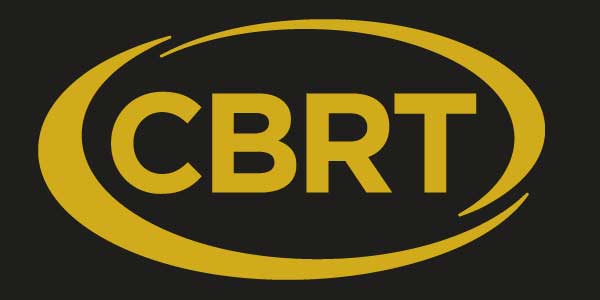Decision Quality: Using Simple Tools to Overcome Complex Issues
October 23, 2014

Bill Beck gave an outstanding presentation filled with ideas for business leaders to use in order to make better, more effective decisions. He stressed the importance of making the best decisions that will move our organizations in the right direction. Not only did he share the “why” behind better decision making, but he also shared simple tools we can use to ensure we’re making the best possible decisions.
Basically put: Better decisions lead to better outcomes.
Below are the notes from our area Round Table Meetings.
Topic: Decision Quality: Using Simple Tools to Overcome Complex Issues.
Kalamazoo Thursday, October 9th
Quality:
- Exceed customers’ expectations
- No Redo’s
- Consistency
- Malcolm Baldrige National Quality Award
- Outcome – measure
- Realize Corporate Quality is always changing
Simple Tools:
- Engagement
- Software programs
- Finance
- People
- Machines
- Process mapping
- Understandable –user friendly
- Simple tools that engage all employees
- Progress is, understanding the tools.
- How important are all of your employees to you?
- Do they all understand the business at the same level?
- They are there for a reason.
- Decisions often involve the whole company
Complex Issues:
- Maintaining production schedules
- Emergency plan, contingency plan
- People
- “Find Oil”
- If you build machines with past information, you won’t keep up.
While out of state on business during 911, I had to have a contingency plan to get back to Michigan. What might interrupt your business? What can you do to respond to avoid a crisis?
- Distraction of the issue at hand can take our focus off the important issue.
- KISS: Keep It Simple Stupid
- It is not so much about making a good decision as it is making your decision good.
- Engage People at every level of your business.
Take a Way:
- KISS plan and everyone has to be in on the plan
- Employee engagement, rally as a team, everyone buy’s in
- Everybody in every area is involved.
- It is more important employees live out core values than recite core values.
- Have employees from Janitors to C- level positions provide solutions.
Kalamazoo Friday, October 10th
Challenge:
- A lot of people look back at decisions and wonder what if they had done something different. Why do we always wait till the end to gauge our decisions? There are a lot of things that influence our decisions that we need to be aware of.
- Need to get back to the old way of thinking.
- The process of decision making is something all of your employees should be engaged in.
- Every employee should understand the strategy behind the decision. Most business people don’t do this.
- Knowledge is a great thing, but wisdom is the key to success in business.
- Culture your organization to make wise decisions.
- How do you create organizational wisdom? The more complex the tool…the fewer the people who will be able to use it.
- The problem with a lot of businesses is that they are very static…they need to give people the opportunity to be innovative.
- Problem is we rush through decisions, not recognizing that you then have to spend time repairing the damage…not building. Some business are constantly repairing.
Solution:
- Don’t be a reactive leader…be proactive. Figure out the “what happens if…” before it happens.
- A huge percentage of the problem is that many organizations have moved away from the simple things. The higher the level of the tool that we have, the less situations are applicable.
- Consider the human body…we need everything to work together in order for us to stay alive. The same is true for your business, all parts, divisions, departments, etc. need to work together in order to keep growing and thriving. After all…why would you have people on your staff that you are not going to use?
- There is no such thing as a snap decision…our intuitions are influenced by past experiences.
- There are intuitive decisions and data driven ones. The intuitive ones are the decisions made through wisdom.
- There are many good, knowledgeable people, but we’re starving for wisdom. Wisdom to understand. Need to create a culture of wise decision making…this is not something that happens in the board room. It has to be authentic. Model this behavior, let employees in on your decision making process. Model good decision making.
- Have to organize your decisions…take others experiences in addition to your own and organize them. Find the patterns. You don’t have to experience everything yourself in order to get wisdom…you just need to have the organizational framework. Learn from other wise people’s choices.
- Organize your data into decisions: Data organized is information. Information organized is knowledge. Knowledge organized is wisdom.
- Need to be transparent, don’t fear addressing your mistakes.
- Culture: too many people don’t fully understand the impact of culture. The behavior you see in on the shop floor is your culture. Not the words (core values) on the wall.
- What happens when you don’t behave according to your core values?
Takeaway:
- Building vs. Repairing. What are you spending time on? Have to be in building mode to maximize your value.
- Bring in the people that have the wisdom.
- Organizations need to share their thinking process. Need to understand the why behind your decisions. Have your decision making tools visible & accessible. Accelerates the development of young people.
Kalamazoo Tuesday, October 14
Quality:
- Exceed customers expectation What you want isn’t always what they want.
- Being on the Same Page with employees/customers
- Be consistent
- No redo’s
- Good communication
- Customer care
- Same Mental Model
- Great decision making
- A great Culture
- Training and development
- Employee Engagement
- Baldrige Seven areas, see below
Malcolm Baldrige National Quality Award Defined:
- The Baldrige Award is given by the President of the United States to businesses–manufacturing and service, small and large—and to education, health care and nonprofit organizations that apply and are judged to be outstanding in seven areas: leadership; strategic planning; customer and market focus; measurement, analysis, and knowledge management; human resource focus; process management; and results.
Simple Tools:
- Simplify business statement
- Employee engagement
- Cultural training
- People driven not data driven
- Sort out what is relevant
- Survey, measure performance and making mental notes of performance daily
- Balance
- Teaching to all learning styles
- Accountable for delivering results
- Engagement
- Finance
- Process mapping
- The definition of C-level should be “SEE” not “Chief”
Complex Issues:
- Building the right culture
- Hire for the right culture
- Accountability
- Lead and model behavior
- Knowing where to invest time
Take a Way:
- Bringing circles together making unity
- Getting everyone on the same Mental Model
- Helping provide the best solutions
- Survey everyday
- Get team to buy in
- Have a simple delivery of what your Culture is
- Look beyond what people are telling you
- Love and Accountability
- Work with leadership within
- Invest and Engage
- C-Level – What are you doing to really see and have everyone be on board?
Grand Rapids Thursday, October 9th
Defining “complex issues”
- People can make issues complex, is they’re unpredictable at times
- time factors play into complex issues
- if there are many variables connected to the issue at hand, it becomes complex
- both sides of the decision could be defended as appropriate, but both have a cost associated with them
Tools:
- run a decision matrix with your staff and key leaders within the organization
- seek a “cord of 3 strands” including a spiritual mentor, Scripture, and personal prayer
- take time to pause and reflect over the decision, not rushing into any final choices too quickly
Solutions:
- for for the Lord to illustrate which path to take
- open negotiation with all parties involved, at the same table
- writing your thoughts out to help you process your thinking and mitigate emotions from the logical choice
- consider “the worst thing that could happen” as you move past it
- this from involves the decision off others who have no vested interest in the outcome, to gain their outside and objective perspective
Take Away:
- never make a decision on a fear
- acknowledge the sovereignty of God, over all potential choices
- invite others into your strategic thinking, both internal and external.
Grand Rapids Tuesday, October 14th
Your Challenge:
- Sometimes “I” need to get out of the way to see the problem
- Understanding the key drivers in your business
- Analysis paralysis
- Failure to execute in right fashion or timely fashion or both
- Inability to break problem down the issue into smaller more manageable pieces
- Mission / scope creep
- Losing focus on the issue
- Understanding the core issue
- Lack of transparency
- See opportunities not problems
- Inability to find the lowest common denominator
- Inability to understand whether it is a people, process or tool problem
- No common language
- We make some simple problems too complex
The Solution
- Create a culture of “evolutionary success”
- Employee empowerment
- Consistent messaging and communication
- Execute in small steps – build upon success
- Give employees the authority to act vs. CEO “pet project”
- Understand the causes vs. symptoms
- Need buy-in (walking them through the process)
- Build trusting relationships
- Listen, listen, listen
The Take Away
- What gets measured gets attention
- Understand the needs / proper way to communicate at all levels
- Structure a process that addresses identifying problems and solves them
- Create accountability within team to solve problems
Marshall Monday, October 13th
The Solution:
- Effective and efficient Communications Methods: Numerous examples of the need for effective communications Up/Dow and Across on a regular basis to ensure continuity, connectedness and to ensure vision and actions are in alignment.
- Daily 5-15 minute face-to-face meetings to break down barriers & provide focus.
- Email communications
- LEAN Techniques: Learning and using lean tools helps people take what seem to be large problems and break them down.
- VA (value added) vs. NVA activity.
- Understanding at all levels what the customer pays for and will not pay for.
- Visual management tools to allow all levels to see and understand performance results.
- Understanding what waste is, measuring what is critical to the customer and how to remove waste from the system/activity
- Use of Technology Tools & Simple Systems:
- Computer calendars to manage people, events, time & schedules effectively
- Cell phones that help us connect immediately with others
- Color coding RYG (Red yellow, Green)
- Visual Management systems